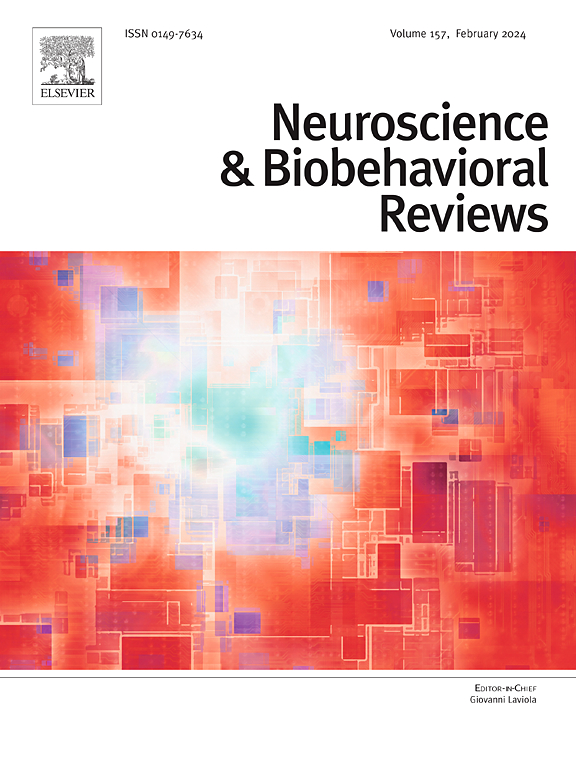对前额颞叶变性谱系言语和语言定量标记及其跨语言应用潜力的系统性综述》(A Systematic Review of the Quantitative Markers of speech and language of the Frontotemporal Degeneration Spectrum and their potential for cross linguistic implementation)。
IF 7.9
1区 医学
Q1 BEHAVIORAL SCIENCES
引用次数: 0
摘要
额颞叶痴呆症(FTD)是一种神经退行性疾病,急需可靠的生物标记物进行早期诊断和监测。言语和语言的变化发生在 FTD 的早期阶段,是一种潜在的非侵入性、早期和可获得的诊断工具。由于大多数研究调查的是讲英语的患者,因此言语和语言标记物在这一疾病谱中的应用受到了限制。本系统性综述研究了尽可能多的不同语言的 FTD 病谱中出现的言语心理声学和语言特征方面的文献。共发现 76 篇研究话语语音中心理声学和语言标记的论文。其中 75% 的论文以英语患者为研究对象。在不同语言中发现的最具有普遍性的特征是语速、发音速度、停顿频率、总停顿时间、名词动词比率和名词总数。虽然不同患者群体之间存在明显的语言间差异,但研究结果表明,跨语言的语音和语言标记有望在 FTD 领域得到应用,尤其是在心理声学特征方面。本文章由计算机程序翻译,如有差异,请以英文原文为准。
A systematic review of the quantitative markers of speech and language of the frontotemporal degeneration spectrum and their potential for cross-linguistic implementation
Frontotemporal dementia (FTD) is a neurodegenerative disease spectrum with an urgent need for reliable biomarkers for early diagnosis and monitoring. Speech and language changes occur in the early stages of FTD and offer a potential non-invasive, early, and accessible diagnostic tool. The use of speech and language markers in this disease spectrum is limited by the fact that most studies investigate English-speaking patients. This systematic review examines the literature on psychoacoustic and linguistic features of speech that occur across the FTD spectrum across as many different languages as possible. 76 papers were identified that investigate psychoacoustic and linguistic markers in discursive speech. 75 % of these papers studied English-speaking patients. The most generalizable features found across different languages, are speech rate, articulation rate, pause frequency, total pause duration, noun-verb ratio, and total number of nouns. While there are clear interlinguistic differences across patient groups, the results show promise for implementation of cross-linguistic markers of speech and language across the FTD spectrum particularly for psychoacoustic features.
求助全文
通过发布文献求助,成功后即可免费获取论文全文。
去求助
来源期刊
CiteScore
14.20
自引率
3.70%
发文量
466
审稿时长
6 months
期刊介绍:
The official journal of the International Behavioral Neuroscience Society publishes original and significant review articles that explore the intersection between neuroscience and the study of psychological processes and behavior. The journal also welcomes articles that primarily focus on psychological processes and behavior, as long as they have relevance to one or more areas of neuroscience.

 求助内容:
求助内容: 应助结果提醒方式:
应助结果提醒方式:


